The manufacturer of the RTD PT100 sensor
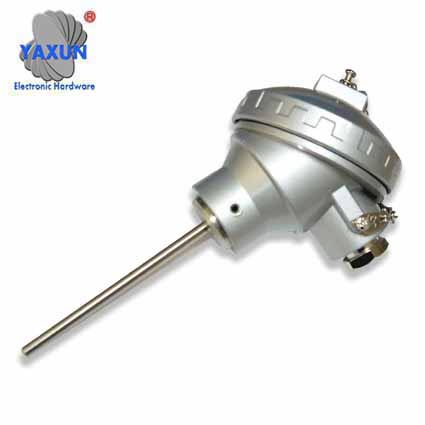
What is RTD PT100 sensor and function? What are the components of the PT100 sensor?
Pt100 sensors are a specific type of RTD (resistance temperature detector) temperature detector. The most important characteristic of Pt100 elements is that they are made of platinum with an electrical resistance of 100 ohms at a temperature of 0 ° C and it is by far the most common type of RTD sensor.A Pt500 temperature probe would have a resistance of 500 ohms at 0 ° C and a Pt1000 probe would have a resistance of 1000 ohms at 0 ° C. Pt100 sensors are typically mounted in some type of protective sheath or sleeve to form a more robust temperature probe, and these are commonly known as a Pt100 probe (platinum Pt100 resistance probes).
How are RTD Pt100 sensors manufactured?
What is the accuracy of the Pt100 sensors?
Pt100 elements
Pt100 surface elements
Pt100 probe
Pt100 and its terminology
More information on RTDs
How are RTD Pt100 sensors manufactured?Glass Coated Wire Wound Pt100 Element There are two main types of Pt100 elements: wire wound and thin film.
Wirewound Pt100 Sensors
Wirewound Pt100 sensors consist of a length of platinum wire wound around a glass or ceramic core. These types of elements are typically 1 to 5 mm in diameter and 10 to 50 mm in length. The ceramic or glass core can make them brittle and susceptible to vibration so they are normally protected within a sheath to form a probe for practical use.
Thin Film Pt100 Sensors
Thin film Pt100 sensors are manufactured using materials and processes similar to those used in the manufacture of integrated circuits. A platinum film is deposited on a ceramic substrate that is encapsulated. This method allows the production of small, precise and fast response sensors. The thin film Pt100 elements are more modern and with a more compact size.
What is the accuracy of the Pt100 sensors?
The international standard IEC 751 specifies tolerances for industrial RTD sensors. There are two main tolerances defined for Pt100 probes: class A, with a tolerance of ± 0.15 ° C at 0 ° C and class B, with a tolerance of ± 0.
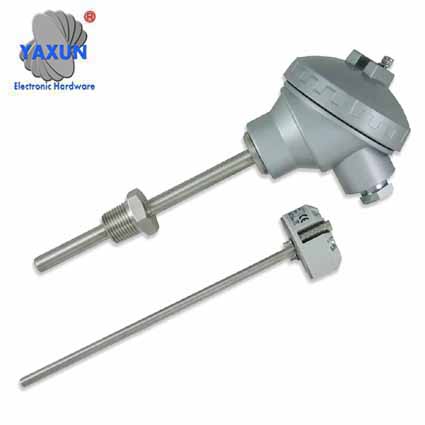 |
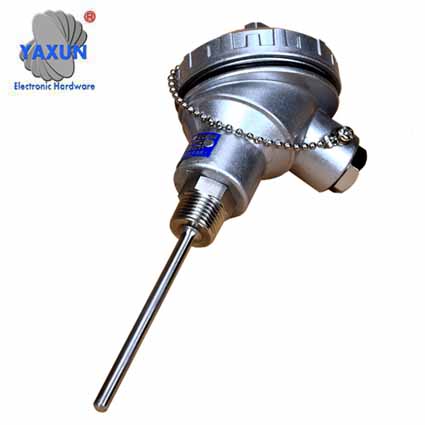 |
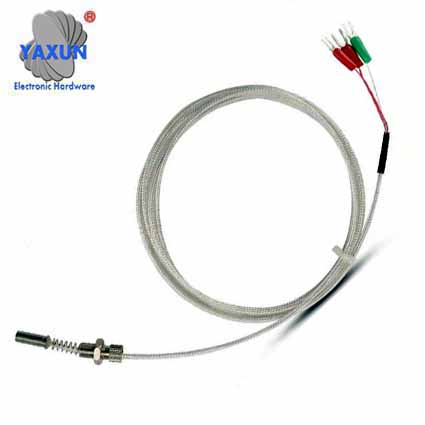 |
| Measure liquid and gas Insert PT100 sensor | Mineral Insulated RTD PT100 sensor | RTD Probe with Fixed Connection |
|
Pt100 sensors A Pt100 sensor is the simplest form of RTD. It consists of a piece of wire wound around a ceramic or glass core. Due to their compact size, RTD elements are typically used when space is very limited. Pt100 surface elements A surface element is a special type of RTD element. It is designed to be as thin as possible to provide good contact for temperature measurement for flat surfaces. Pt100 probe The pt100 temperature probe is the strongest form of RTDs. Unlike thermocouples, a PT100 probe consists of a sensing element mounted inside a metal tube, also known as a sheath. The cover protects the element from the environment. YAXUN offers a wide variety of probes in various configurations. |
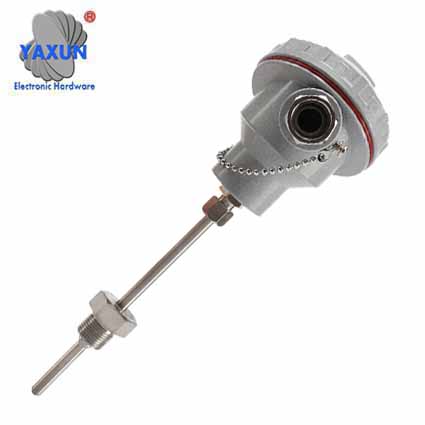
Pt100 probes, RTD sensors and their terminology
RTDIt is the acronym for resistance temperature device or detector. A resistance temperature detector operates on the principle of the change in electrical resistance in the sensor wire as a function of temperature.
RTD element
The sensing zone of the sensor can most commonly be made of platinum, nickel or copper. YAXUN has two types of elements: wound yarn and thin film.
| Pt100 interchangeability element in ° C | ||||
| Temp °C | Class B | Class A | 1/3 DIN | 1/10 DIN |
| -200 | 1,30 | | | |
| -100 | 0,80 | | | |
| -50 | 0,55 | 0,25 | 0,18 | |
| 0 | 0,30 | 0,15 | 0,10 | 0,03 |
| 100 | 0,80 | 0,35 | 0,27 | 0,08 |
| 200 | 1,30 | 0,55 | 0,43 | |
| 250 | 1,55 | 0,65 | 0,52 | |
| 300 | 1,80 | 0,75 | | |
| 350 | 2,05 | 0,85 | | |
| 400 | 2,30 | 0,95 | | |
| 450 | 2,55 | 1,05 | | |
| 500 | 2,80 | | | |
| 600 | 3,30 | | | |
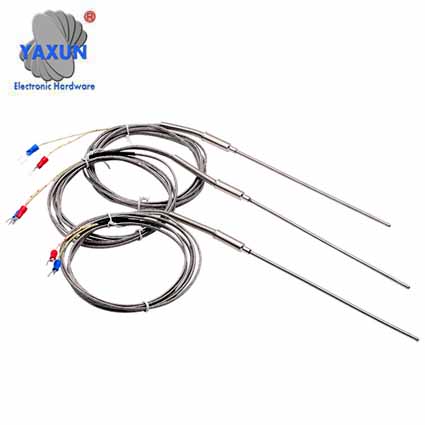
Pt100 temperature probe
An assembly made up of a Pt100 element, a sheath, a lead wire, and a termination or connection. The standard RTD probe is made with a 100 ohm platinum European curve element (alpha = 0.00385).
Platinum RTD Sensors
Also known as Pt RTDs, platinum sensors are typically the most linear, stable, repeatable, and accurate of all RTDs. Platinum wire was chosen by as it is best suited to the needs of precision thermometry.
Thin film RTD element
Thin film RTDs consist of a thin layer of a base metal embedded in a ceramic substrate and trimmed to produce the desired resistance value. OMEGA pt100s are made by depositing a platinum film on a substrate and then encapsulating the two. This method allows the production of small, precise, and fast response sensors. The thin film elements conform to the European / DIN 43760 curve standards and the standard tolerance of "0.1% DIN".
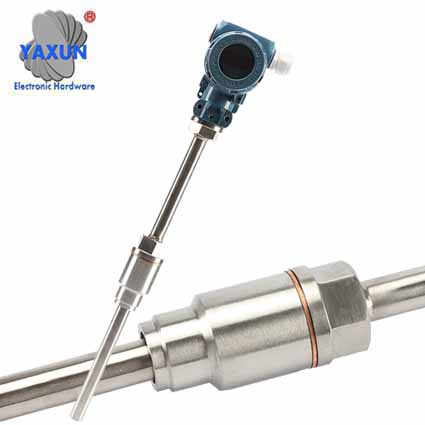
Class A Pt100 RTD
Greater tolerance and precision of Pt100 elements, class A (IEC-751), alpha = 0.00385.
RTD Pt100 class B
Most common tolerance and precision of Pt100 elements, class B (IEC-751), alpha = 0.00385.
Curve 0.00385 alpha
The European curve conforms to the standard "0.1% DIN" tolerance and complies with the DIN 43760 standard.
Coiled wire
The standard RTD elements used in YAXUN probe sets are made from 99.99% pure platinum wire wound on a glass or ceramic core and hermetically sealed within a glass or ceramic capsule.





